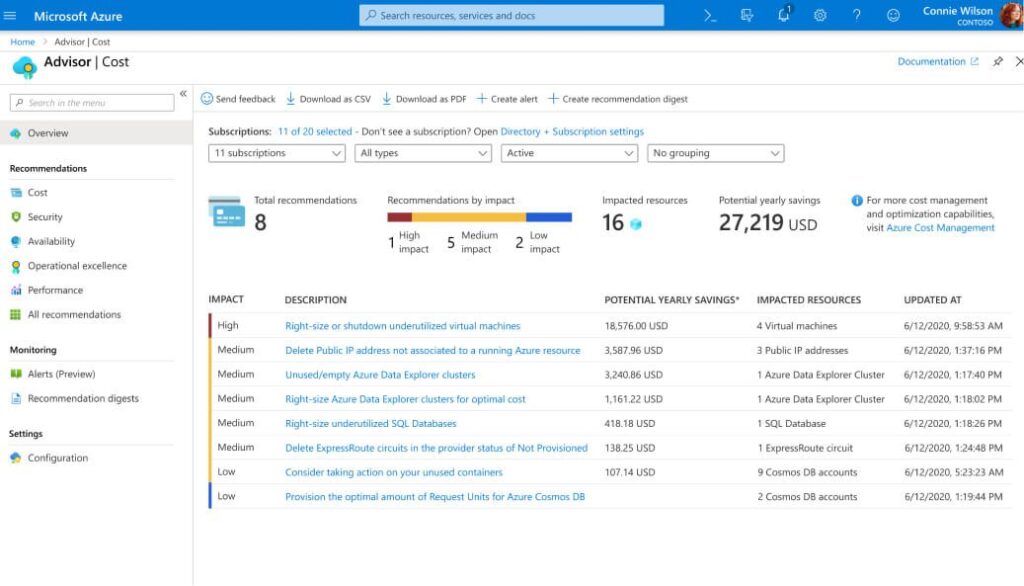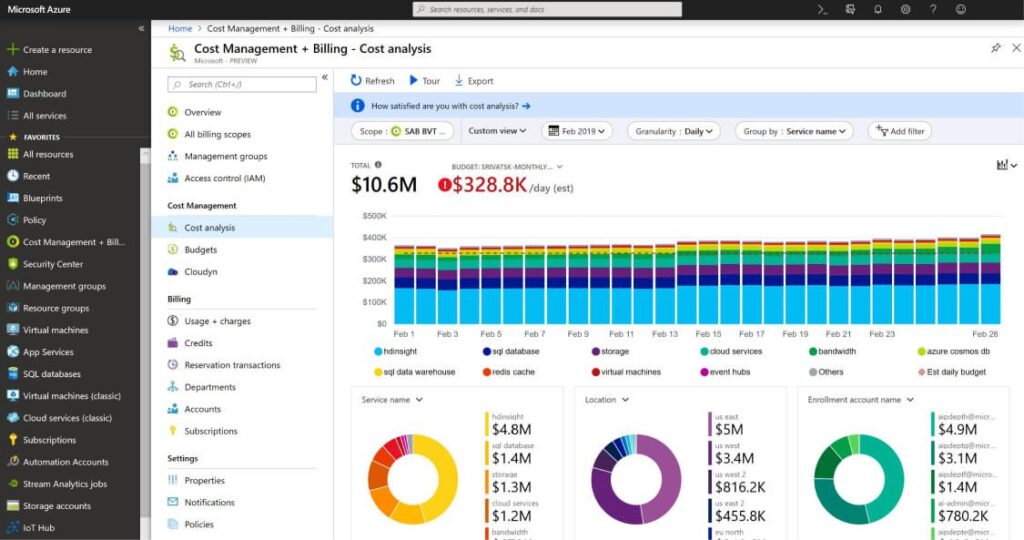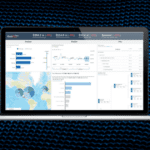Optimising Azure spend
Thanks to Microsoft Azure and technological advancements, more companies than ever before are able to take advantage of cloud technologies. However, one of the downsides of cloud configurations is that costs quickly add up and multiply depending on features used. If cloud costs aren’t properly audited, companies may find an unexpected bill at the end of the month. We explore best practises for optimising Azure spend.
Move workloads to containers
If your application runs on virtual machines, you can reduce cloud hosting costs by migrating it to containers. One example of this is having several CMS servers which run individually on separate Azure VMs. Using Azure Kubernetes Service (AKS), the servers can be deployed as containers, spreading the instances across a few VMs. As AKS pricing per host is similar to Azure VM hosting, costs can fall dramatically. There is also an optional Uptime Guarantee offered by AKS, for a small fee.
Azure cost management recommendations
Microsoft Azure has included tools to help organisations predict cost and optimise their spend.
Azure Pricing Calculator shows total cost of an intended workload on Azure, granting the ability to anticipate costs. Azure cost analysis shows how much each workload will cost as they are running within Azure. It also predicts future costs based on current configurations.
Azure budgets will alert Azure users when spending thresholds have been met. Finally, Azure Advisor helps to provide cost optimisation recommendations by identifying idle and underutilised resources. It provides easy ways to implement actions to reduce spend.
Go serverless
The Azure Functions service offers a way to save money through serverless computing. This means having software running on demand, when requested by users. There is no charge when the software is not running.
Serverless computing benefits compute-intensive workloads that that need to be running constantly. This is more cost-effective than having a VM run indefinitely, regardless of whether it’s being used or not.
The right server location
By choosing the right cloud region, your workloads will be hosted, physically, in that geographical area. Azure’s pricing options vary depending on location, so we advise looking carefully at prices depending on the map of options.
Typically, US servers are cheapest with some European locations also being very affordable. Companies can save money by choosing to place their workloads in these regions but need to consider their user base too. If an Azure server is too far from the users, they can experience high network latency. This would result in a negative experience for them so we recommend finding the right balance.
Azure payment options
Azure offers different VM payments depending on the client’s requirements.
On-demand/Pay-as-you-go: This allows clients to launch VMs instantly, which means this is the most expensive option. However, it does offer flexibility and convenience as companies can run instances without interruption.
Spot: This is an interesting option as it allows organisations to buy spare Azure compute capacity for much cheaper than On-demand. Savings can be up to 90% but the thing to note is that Microsoft can terminate a Spot instance depending on capacity demands. This option is best for workloads that don’t require constant running.
Reserved: VM instances can be reserve for one or three-year periods. This means savings of up to 72% compared to On-demand pricing.




